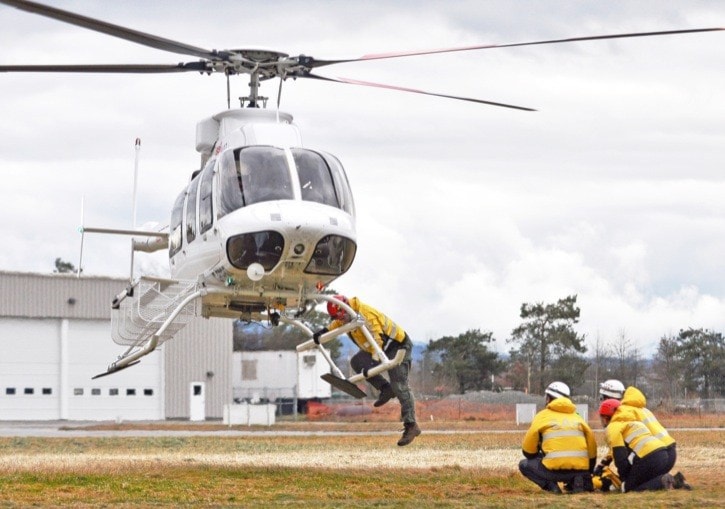To exit a helicopter hovering three feet above the ground, far more is involved than simply jumping out.
It is important to climb out slowly and in a stable manner so that the helicopter is not thrown off balance.
These hover exit training skills were taught to 27 members of Central Fraser Valley Search and Rescue on Saturday afternoon, during a training session at Langley Regional Airport.
After spending two hours in a classroom learning important techniques, the members headed out to the tarmac to test their skills on a Bell 407— a helicopter commonly used for search and rescue missions.
Starting at a hover two to three feet off the ground, the trainees practised climbing in and out of the powerful chopper as strong winds from its rotor beat down against them. They then repeated the exercise at slightly higher heights.
“It’s imitating some realistic situations where we may need to be dropped into the mountains, and it’s not always a nice clear landing. You have to get in and then get out, and that’s why we do this training,” said Lee Holeczek, search manager for Central Fraser Valley Search and Rescue.
This is one of many weekly training sessions offered by Central Fraser Valley Search and Rescue, who regularly train in Langley on Tuesday nights. Recruits are required to have a Level 1 first aid course, be 19 years of age or older and “have willingness to take part,” Holeczek said.
They then go through numerous training sessions to become full members.
Holeczek, who has been a member of search and rescue for 13 years, says his job is “very rewarding.”
“I just enjoy being able to get out there and help people when they need it,” he said.
“There’s lots of different memories that stick out in my mind when we help find the people or find the injured person. It’s when people come back afterwards and say thank you to the team that you realize how much your part helped them in their time of need.”
